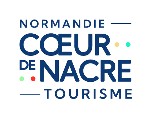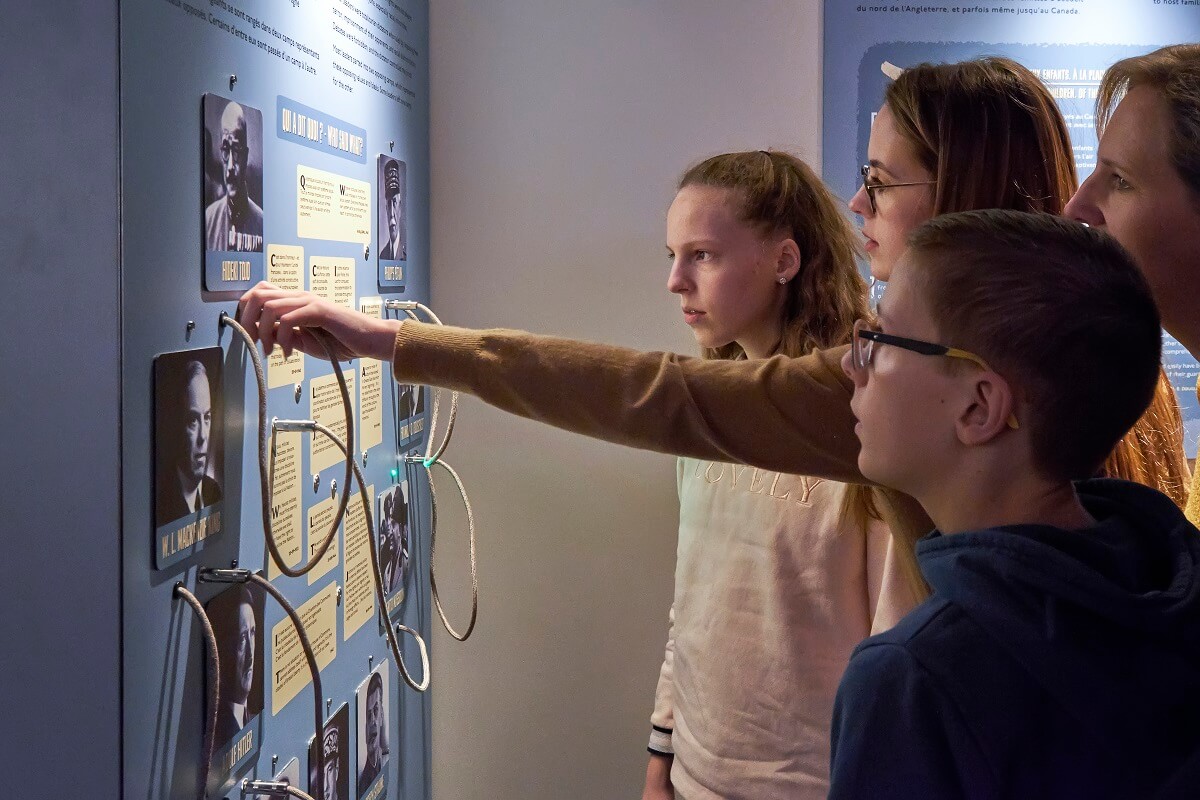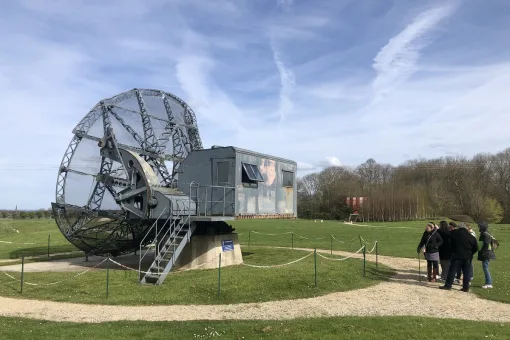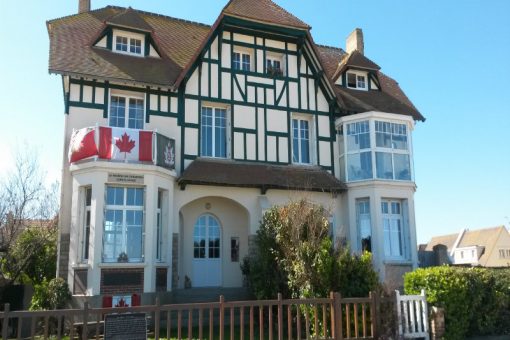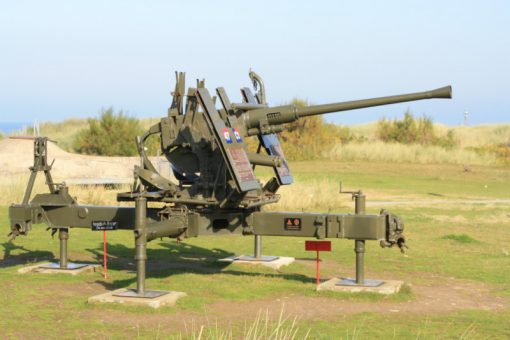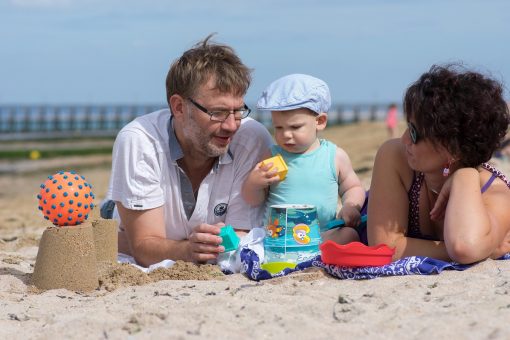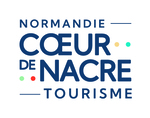Have you decided to take the children to visit the D-Day landing beaches in Normandy?
You’re right! It is by being there that they will understand that the fate of France, Europe and the world was decided on these beaches in 1944.
Here we go fo our 5 good reasons to visit the juno beach.
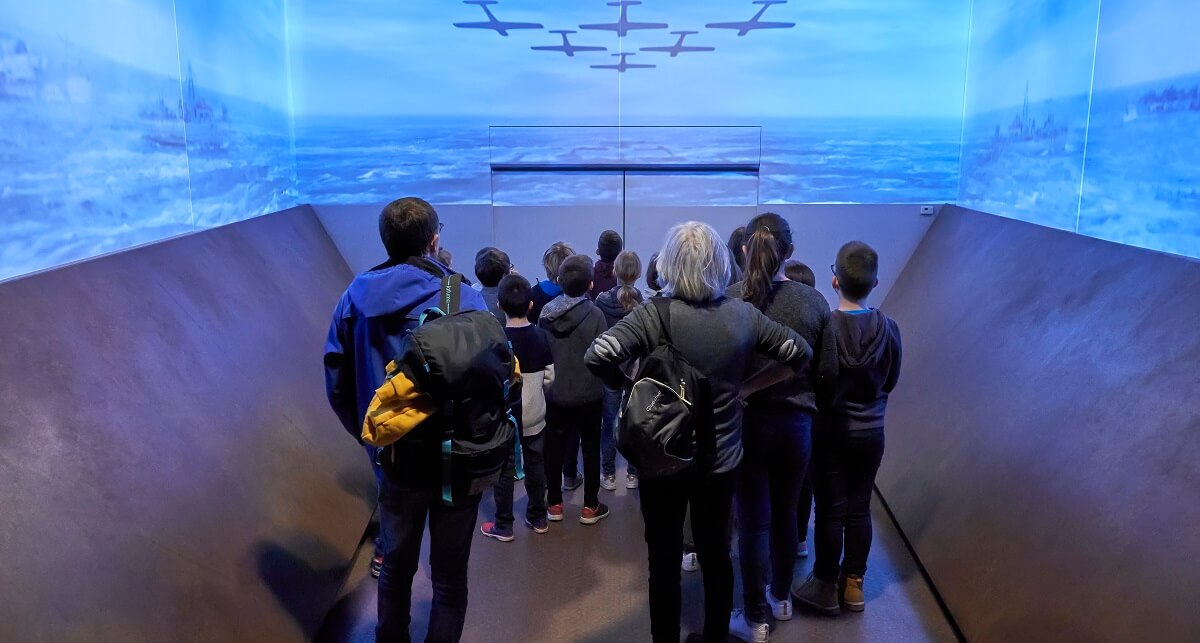
Discovering the museums, seeing the remains of the Atlantic Wall up close, visiting the military cemeteries… it is thanks to this stay that the history lessons will take on their full meaning.
We invite you to stop in Courseulles-sur-Mer trough 5 good reasons to visit the juno Beach.
This is the only Canadian museum on the D-Day landing beaches. It is resolutely family-oriented.
Conceived and designed by Canadian veterans, this museum presents an interactive and dynamic scenography adapted to children from 7 years old.
On the programme:
5 thematic rooms, 2 moving films, numerous objects that belonged to Canadian soldiers and civilians, poignant testimonies and several multimedia tools. All this in Juno Park, a real open-air museum with the remains of the Atlantic Wall.
The museum presents the incredible contribution of Canada during the Second World War, certainly less known than that of the United States.
It also offers a better understanding of Canadian values and culture. All this with two levels of reading, for young and old.
It is not for nothing that 95% of Tripadvisor reviews are “good” or “excellent”!
Here are the 5 good reasons to visit the juno beach with your family.
But first of all… a little history is in order
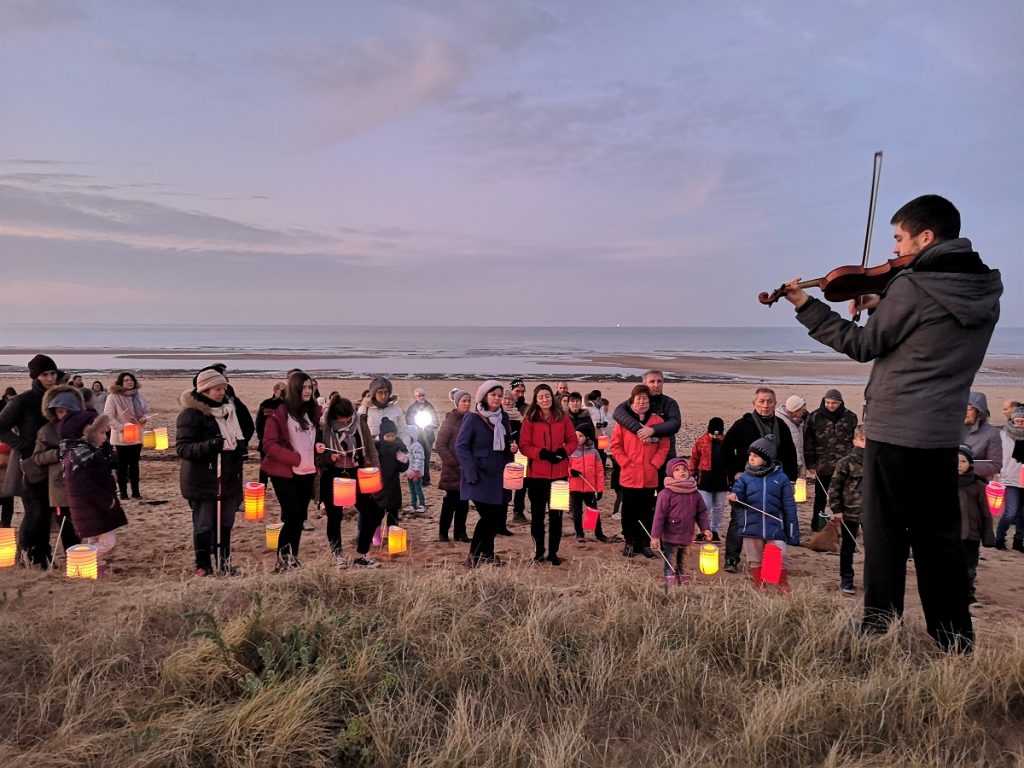
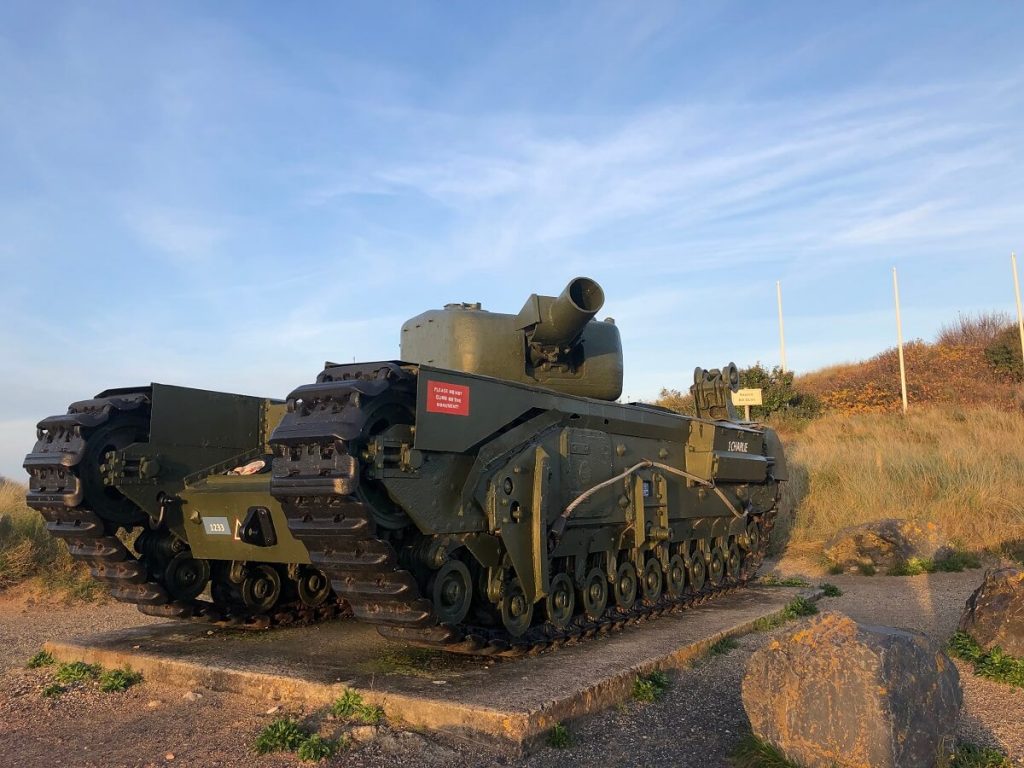
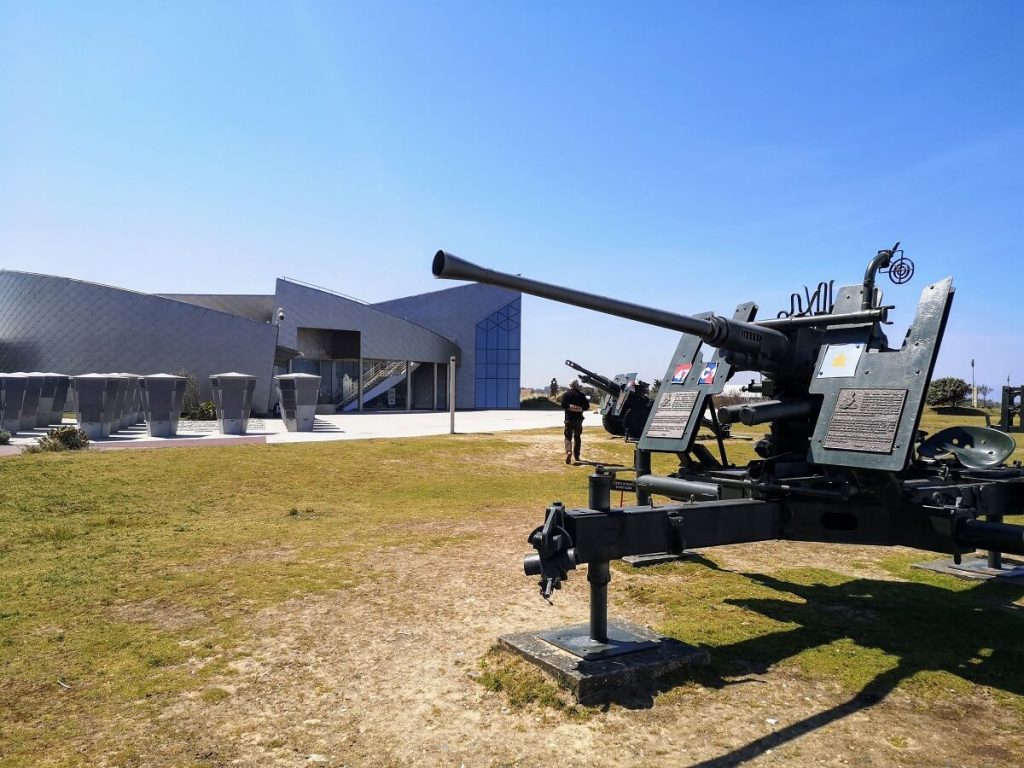
The D-Day landings on the beaches of Normandy on 6 June 1944 was the most complex military operation ever orchestrated!
More than 6,000 warships and landing craft brought more than 130,000 soldiers across the Channel with the support of thousands of aircraft. 14,000 of them were Canadians, making Canada the third largest troop contributor after the United States and Great Britain.
They landed on the beach sector codenamed Juno, liberating the communes of Graye-sur-Mer to Saint-Aubin-sur-Mer.
All of Canada participated in the war effort by providing the troops with the necessary equipment and supplies. More than 1 million Canadians enlisted, making a decisive contribution to the Allied forces.
It should be remembered that the young soldiers who came to fight in Europe were volunteers.
Normandy will always bear the marks of this history. On the 80 km of the D-Day landing beaches, there are about forty sites and museums that tell the story of the D-Day landings:
The Juno Beach Centre is certainly one of the best designed for children. Count on 1h30 of visit.
Note: there is a family pass for 2 adults and 3 children over 8 years old. The museum is free for children under 8.
1# A museum geared towards the younger generation
A museum adapted for young people, that was the wish of the veterans who founded the Juno Beach Centre.
Thanks to its interactive modules and touch screens, the “Explore Juno with your family” tour makes discovering the museum with your family more accessible: manipulations, quizzes, games…
Each module invites children and teenagers to think about historical concepts within their reach. The interactive games allow them to accumulate “poppy points” while understanding the issues of immigration, war and dictatorships.
At the end of the course, around the giant tablet, we keep track of our points while discovering the Canada of today, its culture, its geography and its people.
With Explore Juno, I discovered what it was like to be my age during the war. It made me think.
Thomas, 11 ans
2# A complete scenography to understand the D-Day
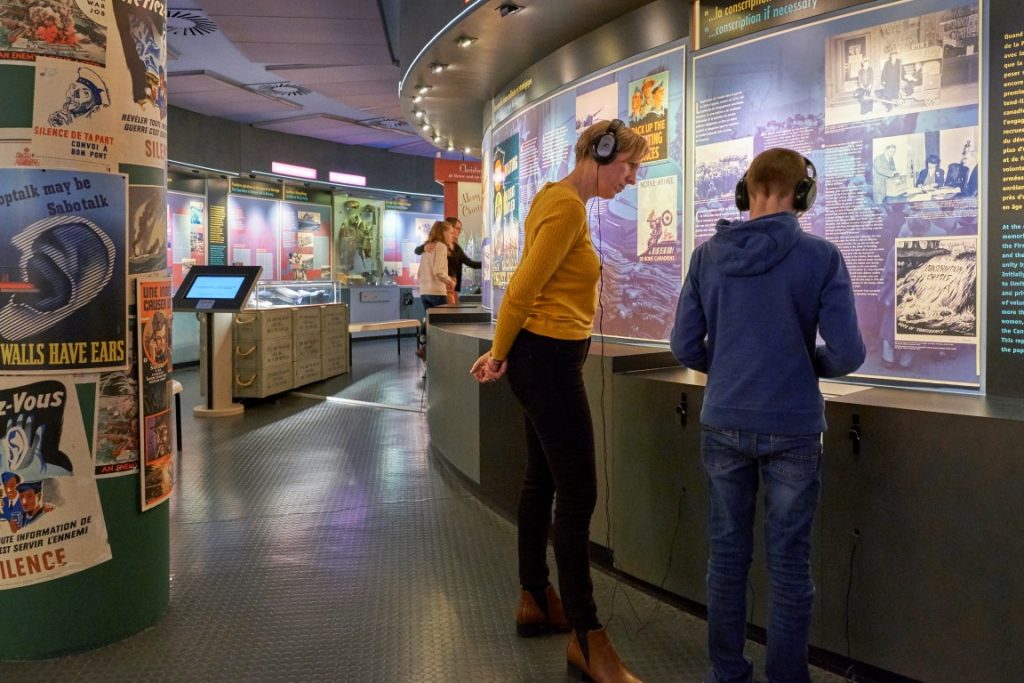
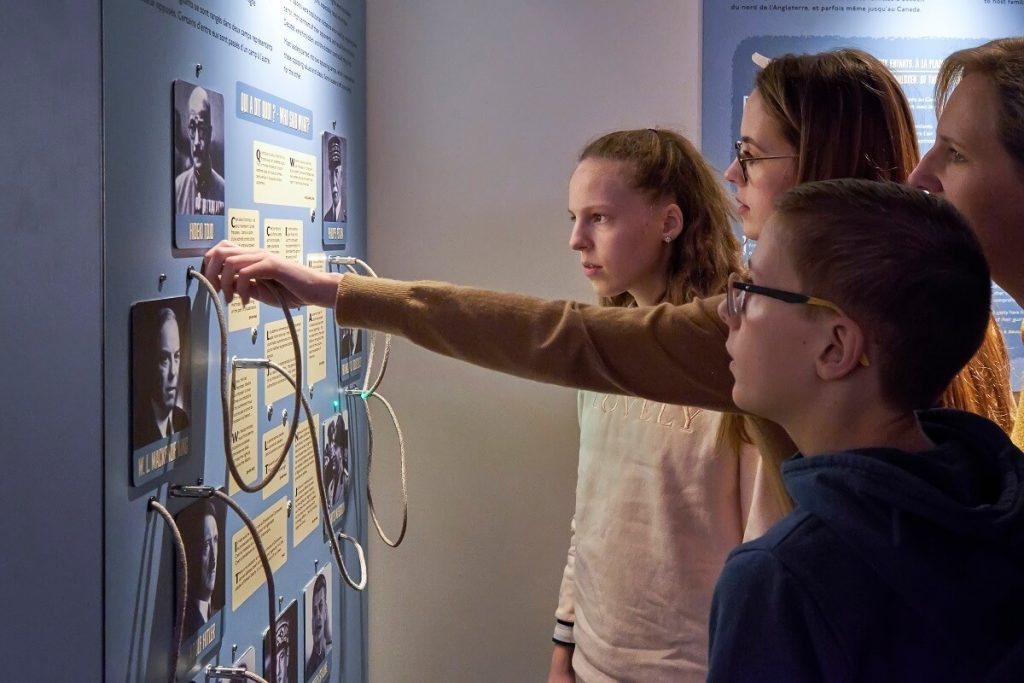
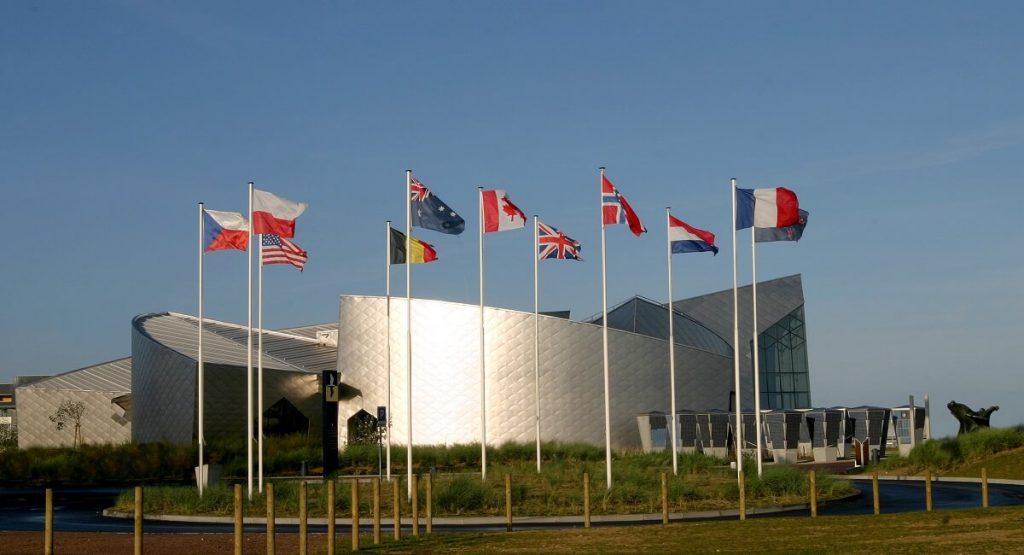
As there was no commemorative place to remember Canada’s important contribution, the Juno Beach Centre project was born in the 1990s on the initiative of a group of veterans.
This place of remembrance pays tribute to our “cousins” from across the Atlantic. To the 45,000 Canadians who lost their lives during the war, including 5,500 during the Battle of Normandy and 359 on D-Day.
What is special about the museum?
The tours are led by young Canadian university guides.
As soon as the visit begins, we are plunged into history by taking our place in a room that evokes the shape of a landing craft. It gets dark. An immersive film projected all around us puts us in the mind of the Canadians during the Second World War.
Emotion guaranteed.
Throughout the visit, we understand the civil and military war effort in Canada and on the various fronts during the Second World War.
In the five rooms, we discover life stories, audiovisual and audio testimonies, objects from the soldiers’ daily lives: weapons, medicine, military uniforms and unusual objects.
Each room has different levels of reading adapted to parents and children, with in particular the “Explore Juno” tour for the youngest in the form of an app, games to play with and quizzes…
Before discovering the film “In Their Footsteps”, take the time to look up at the ceiling. The names of more than 45,000 Canadian war dead are scrolled across the ceiling, etched in our memory. Thank you; thank you for giving us back our freedom.
The highlight of the visit is the immersive film “In Their Footsteps”, which is pure intensity. It illustrates the sacrifice of Canadian soldiers on D-Day and in the Battle of Normandy. Made from archival film and re-enactment scenes.
It is accompanied by the voices of Canadian war correspondents Marcel Ouimet and Matthew Halton.
As we leave the room, the children ask questions. That’s good. To question, to understand, to make an impression, to cultivate a curiosity for another culture… these are the main objectives of the creators of the museum.
Could we go to the beach and walk in the footsteps of the soldiers?
Lucie, 9 ans.
3# A museum in the heart of the remains of the Atlantic Wall
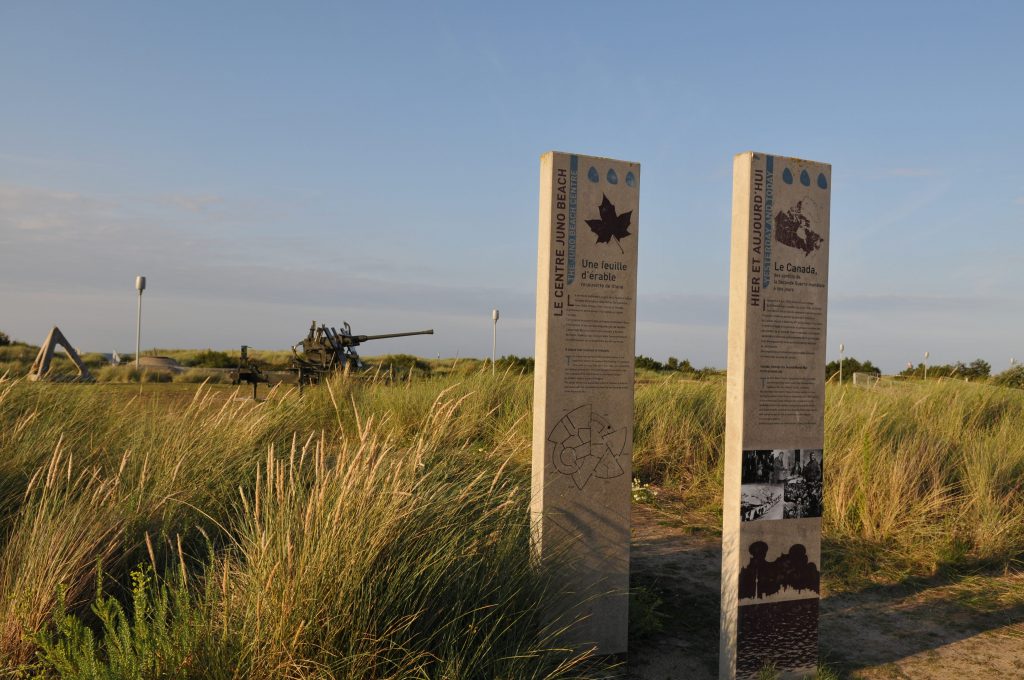
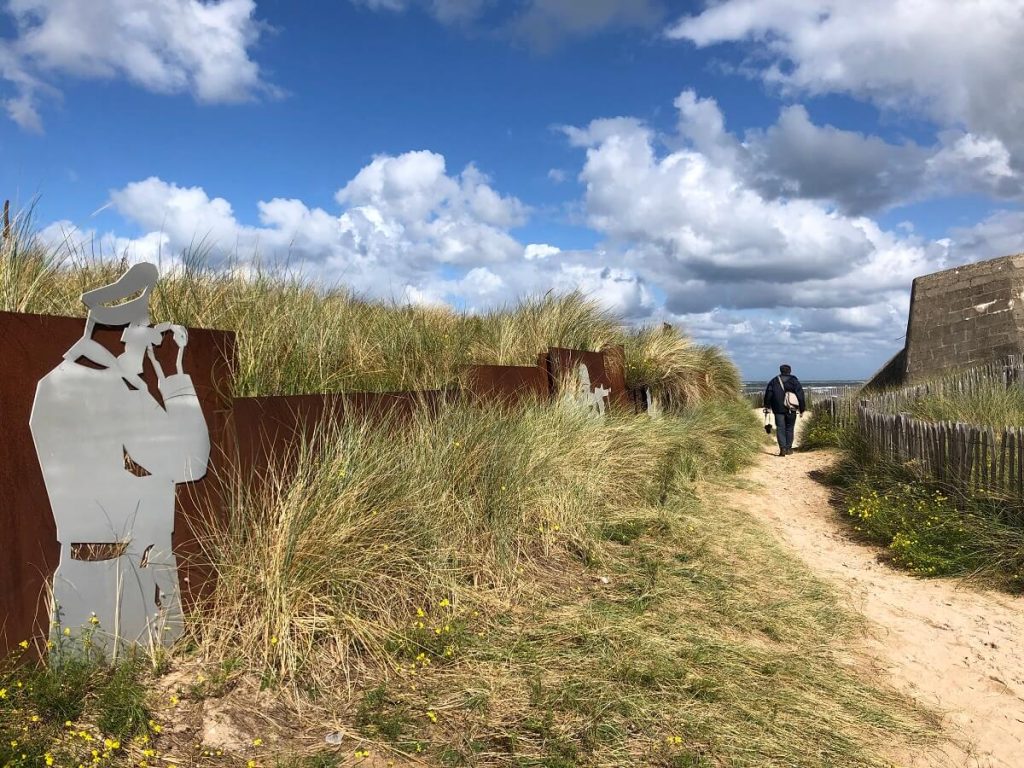
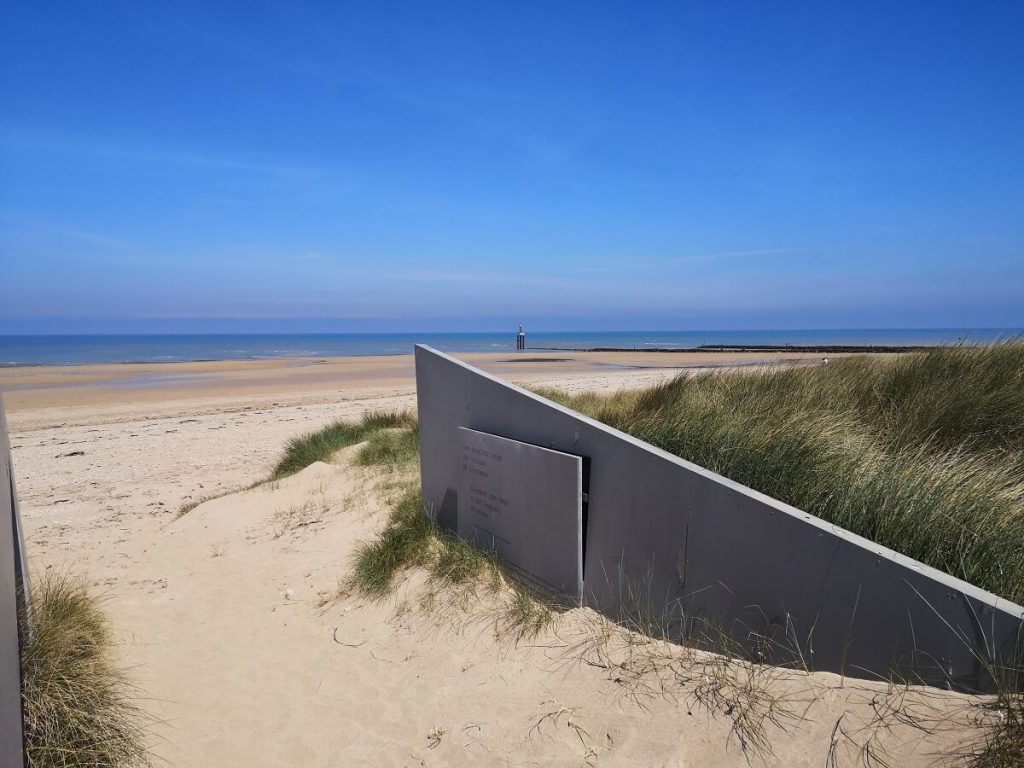
The Juno Beach Centre is located in the heart of the Juno Park in Courseulles-sur-Mer. There are several remains of the defensive strongpoint built during the German occupation, known as the Atlantic Wall. There is also a model of a Canadian gun and German tetrahedrons.
The museum’s Canadian guides give 45-minute guided tours of this historic site, suitable for children aged 6 and up. The underground galleries, the German command post and the observation bunker are only accessible during these tours.
They end on the beach to explain how the 14,000 Canadian soldiers who landed on Juno Beach on 6 June 1944 overcame this defensive system.
Juno Park is a pleasant place to walk around, open all year round and free of charge. A signposted trail provides information on three themes: the landings, the seaside resort, and the flora and fauna of the coast.
Continuing the walk westwards, past the sailing school, you can see the Lorraine Cross, symbol of General de Gaulle’s return to France after his exile in England. A little further on, a “One Charlie” tank that landed on 6 June 1944 at Graye-sur-Mer is displayed.
Juno Beach is probably the area with the most remains of the Second World War visible or buried under the dune. If you would like to show your children other traces of the Atlantic Wall, we invite you to take a walk along the dyke at Bernières-sur-mer to see the bunkers and the Maison des Canadiens.
Then take a tour of the radar station at Douvres-la-Délivrande, an authentic German radar station on the D-Day landing beaches. The bunkers have been converted into museum spaces.
Station Radar 44
DOUVRES-LA-DELIVRANDE
The only radar station kept in its originals state of the D-Day Landing beaches. It is located in an authentic […]
La Maison des canadiens
BERNIERES-SUR-MER
There is one house in Bernières sur mer that is simply part of our collective memory, a large villa built […]
Le Parc Juno
COURSEULLES-SUR-MER
Guided tours of the bunkers opposite the museum with the Canadian guides of the Juno Beach Centre in French or […]
4# A new geocaching style game
Juno Caching is a free outdoor treasure hunt in the park surrounding the museum.
It’s perfect for families!
Here’s another of the 5 good reasons to visit Juno Beach.
With the help of the seagull Charlie and the veteran Marius, you can move around the bunkers, around the tetrahedrons or along the beach in search of clues hidden in the caches.
After visiting the museum, you can learn more! But not only about the D-Day landings, you also discover the biodiversity that surrounds us.
Why talk about biodiversity? Because the museum team is very sensitive to environmental issues.
The Juno Beach Centre is the first museum in Normandy committed to a global strategy of decarbonisation, sustainable development and circular economy.
Its team works to reduce its carbon footprint by 5% annually. Reduced rates for cycle tourists, setting up an eco-pasture, recycling of old exhibitions…
Fighting for the cause of the environment, out of respect for the soldiers of 1944, is an obvious way to keep the peace they left us.
Nathalie Worthington, the director of the Juno Beach Centre
5# Humanity at the heart of history
Beyond the tangible facts of D-Day, the museum is full of audio, video and written testimonies. The personal stories of soldiers and civilians complement the official history.
What if I had been in their shoes?
During the visit and on the WebbVisit app, we discover several life stories:
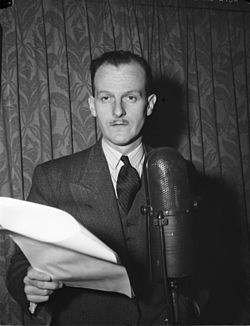
Marcel Ouimet, a Quebec journalist, was sent abroad by the CBC public radio. In 1943, he followed the Canadian army to Italy and in 1944-45, he covered the entire campaign in Northwest Europe.
On D-Day, he landed at Bernières-sur-Mer, shortly after the first waves of the assault.
Molly, a nurse from Ontario, was among the first Canadian women to land in France to join the Allied offensive in Normandy.
With the medical team, she set up a mobile field hospital.
She recounts the gruelling and agonizing 72 hours after D-Day, during which she operated on the wounded in the operating theatre in a simple tent, while bombs exploded around her.
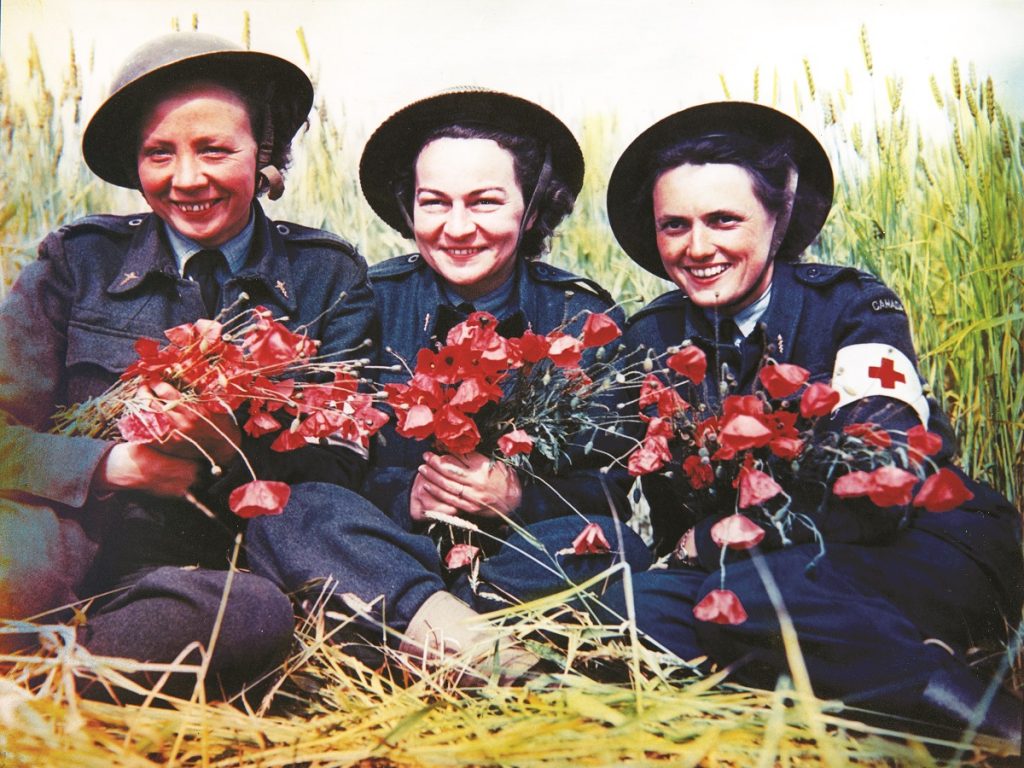
Hugh Buckley is from British Columbia.
He was part of a reconnaissance group.
After D-Day, his mission was to secure a shelter for the regiment near Caen-Carpiquet airport, 20km from Juno Beach.
On 7 June they managed to make an express trip there and back in a tank, crossing enemy lines without being spotted, a feat!
The exhibition
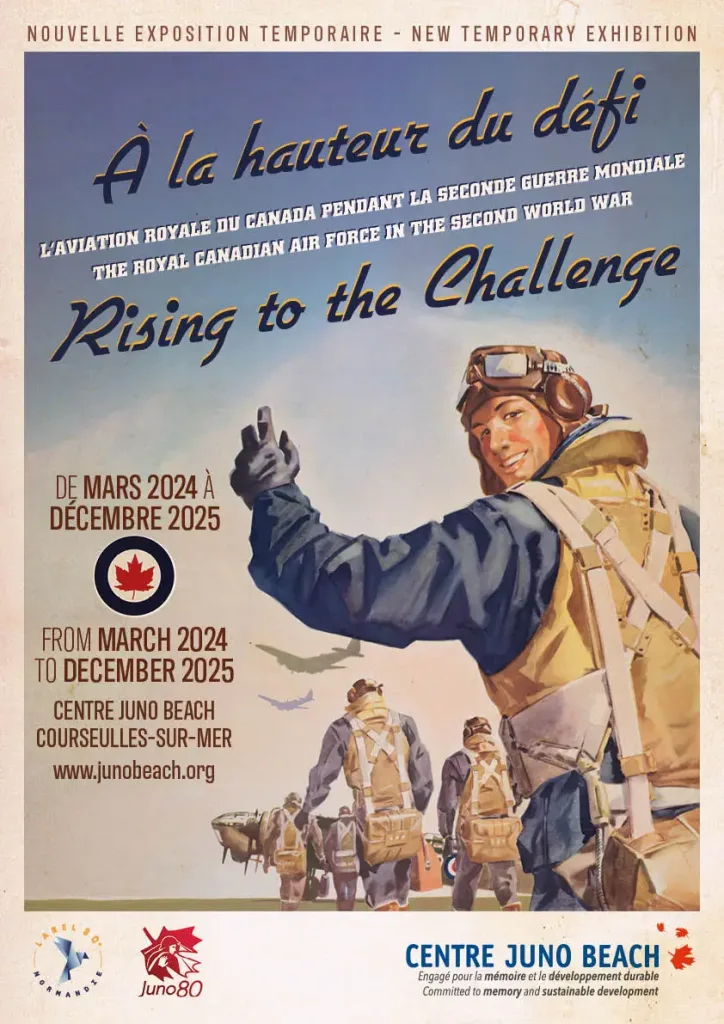
Rising to the challenge, the Royal Canadian Air Force during the Second World War
From March 1, 2024
To mark the 100th anniversary of the Royal Canadian Air Force, the Juno Beach Centre presents “Rising to the Challenge”, a new temporary exhibition commemorating the RCAF’s role in the Second World War.
The French-Canadian boutique
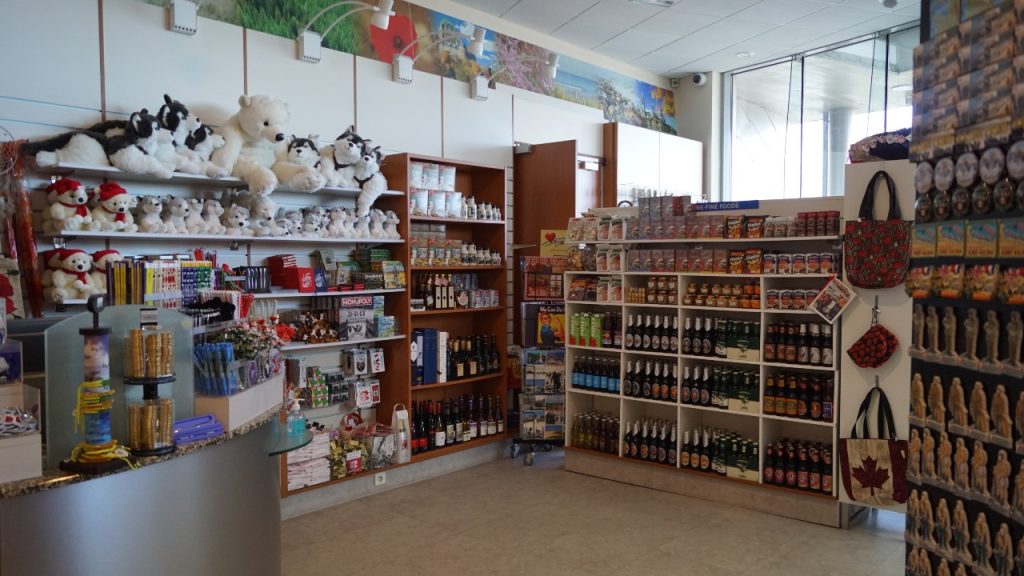
Before you leave, don’t miss a visit to the Franco-Canadian museum boutique and its exclusive Canadian products.
Of course, you’ll also find our famous maple products, as well as a selection of our famous Normandy products.
You’ll also find a poppy collection and numerous references on the D-Day landings.
